On a College-sponsored trip to Russia in 1959, Hope Cooke ’62 asked Alice Kandell ’60 if she’d like to continue on to Tibet. Kandell’s parents nixed the idea, so Cooke ventured solo to Asia, making it as far as Darjeeling, where she met her future husband, Palden Thondup Namgyal. In a fairy-tale twist, Namgyal was also the Crown Prince of Sikkim, a tiny, sovereign kingdom nestled between Tibet, Bhutan, and Nepal.
Two years after Cooke married the prince in 1963, they were crowned king and queen of Sikkim. Kandell, then pursuing a doctorate in psychology at Harvard, attended the coronation. She witnessed elaborate ceremonies and processionals with Tibetan monks and was stunned by the beauty of the Himalayas. “To see my friend have this experience in such an exquisite setting,” she recalls, “was overwhelming.”
Prior to her trip, an editor from Redbook had asked Kandell to take pictures. Though Kandell had no experience, she agreed—and started taking photography lessons immediately. “I just did it,” she explains. “That’s what Sarah Lawrence taught me.”
The 1965 trip to Sikkim would be the first of many. The king asked Kandell to document the country’s culture, so for the next seven years, Kandell’s camera captured Sikkim life—from handcrafts to farming, from religious rituals to palace events. She created two publications featuring her photographs: a coffee table book, Mountaintop Kingdom: Sikkim, and Sikkim: The Hidden Kingdom, which she also wrote.
The king’s request was prophetic. In 1975, Sikkim was annexed by India. Not long after, Cooke moved back to New York with the royal children, and the king passed away in 1982.
Thirty years later, Kandell donated approximately 15,000 photographs of the bygone kingdom to the Library of Congress. Thanks to that gift, she occasionally receives Facebook messages from friends she made in Sikkim all those years ago.
“Sikkim was a large part of my life,” Kandell says of her enduring connection. “It’s very nice to share it with the world.”
Web Extra:
Kandell’s Tibetan Art Collection
In the early 1970s, Alice Kandell ’60 made a snap decision that would have lasting consequence for Tibetan culture. While traveling in Nepal, she encountered a family of Tibetan refugees carrying religious artifacts. At the time, Buddhist monasteries were being vandalized and the objects housed within them destroyed. Kandell felt conflicted about buying a sacred item, she says, but knew it would otherwise end up on the art market. So she purchased a Buddhist relic, starting a decades-long collection of Tibetan art—much of which is now preserved by the Smithsonian Institution.
Kandell’s appreciation of these cultural treasures was first inspired by the royal coronation in Sikkim, where Tibetan monks and ceremonies figured prominently in the celebration. Kandell was instantly moved. “The beauty of the artwork especially was extraordinary,” she recalls. On the photography ventures across Sikkim that followed, she documented the diversity of life, culture, and topography in the tiny kingdom. Along the way, she also took note of simple yet striking religious altars in the homes of Tibetan families.
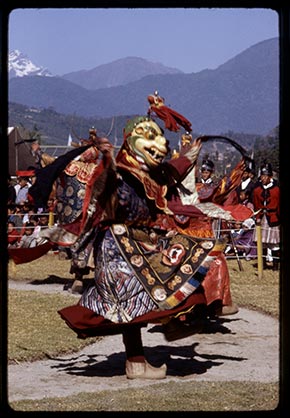 Kandell’s trips came to an end when India annexed Sikkim in 1974. Back in the United States, she became a child psychologist, married, and started a family. Yet, her love of Himalayan and Tibetan culture never diminished, and she continued adding pieces to her collection. In a 2011 article for The Wall Street Journal, Kandell recalled that her children came to think of these sacred objects as just “part of the living room.”
Kandell’s trips came to an end when India annexed Sikkim in 1974. Back in the United States, she became a child psychologist, married, and started a family. Yet, her love of Himalayan and Tibetan culture never diminished, and she continued adding pieces to her collection. In a 2011 article for The Wall Street Journal, Kandell recalled that her children came to think of these sacred objects as just “part of the living room.”
Kandell’s impressive collection contained approximately 500 pieces created between the 12th and 19th centuries: Tibetan Buddhist statues, bronzes, religious ritual implements, and thangkas, which are scroll paintings that often depict deities or mandalas. The sheer number she acquired over 30 years required that she dedicate a room in her apartment to the objects, which she configured like a Tibetan shrine.
As the years passed and the collection grew, Kandell had an epiphany not unlike the one that had prompted her to preserve the pieces in the first place. “I realized that as much as I loved this collection, it didn’t belong to me. Tibetans should have access to it,” she remembers thinking. Kandell contacted the Smithsonian.
Together, they decided that a donation of 220 pieces should be housed at the Arthur M. Sackler Gallery, which holds an extensive collection of Asian art. The Tibetan Shrine from the Alice S. Kandell Collection opened to the public in 2010.
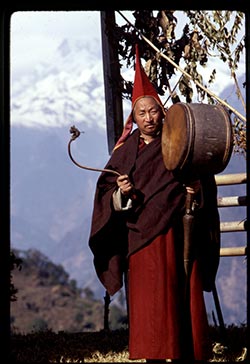 The initial four-month exhibit, which presented the collection in the form of a Tibetan shrine room, drew more than 300,000 visitors, including Kandell’s grandchildren. The Sackler Gallery became the most visited section of the museum, and Kandell’s donated collection is now on permanent view. For those unable to make the trip, the book A Shrine for Tibet (2010) contains photos and descriptive text produced while the objects were still in Kandell’s home. The Smithsonian also created Sacred Spaces, an app complete with chanting and flickering candles that lets users feel as if they are standing in Kandell’s Shrine.
The initial four-month exhibit, which presented the collection in the form of a Tibetan shrine room, drew more than 300,000 visitors, including Kandell’s grandchildren. The Sackler Gallery became the most visited section of the museum, and Kandell’s donated collection is now on permanent view. For those unable to make the trip, the book A Shrine for Tibet (2010) contains photos and descriptive text produced while the objects were still in Kandell’s home. The Smithsonian also created Sacred Spaces, an app complete with chanting and flickering candles that lets users feel as if they are standing in Kandell’s Shrine.
After making her contribution to the Smithsonian, however, Kandell says her own shrine room felt empty. So she determined to refill her home and preserve even more Tibetan art for the future. Since then, Kandell has amassed a significant new collection, which she also plans to donate one day.
During the formal announcement of her gift to the Smithsonian, the Dalai Lama stood alongside Kandell and remarked: “Your intention is very good. People will gain a deeper understanding of the Buddha and a way of thinking that is very much based on peace and compassion.”
Written by Suzanne Guillette MFA ’05
Photos by Alice Kandell '60
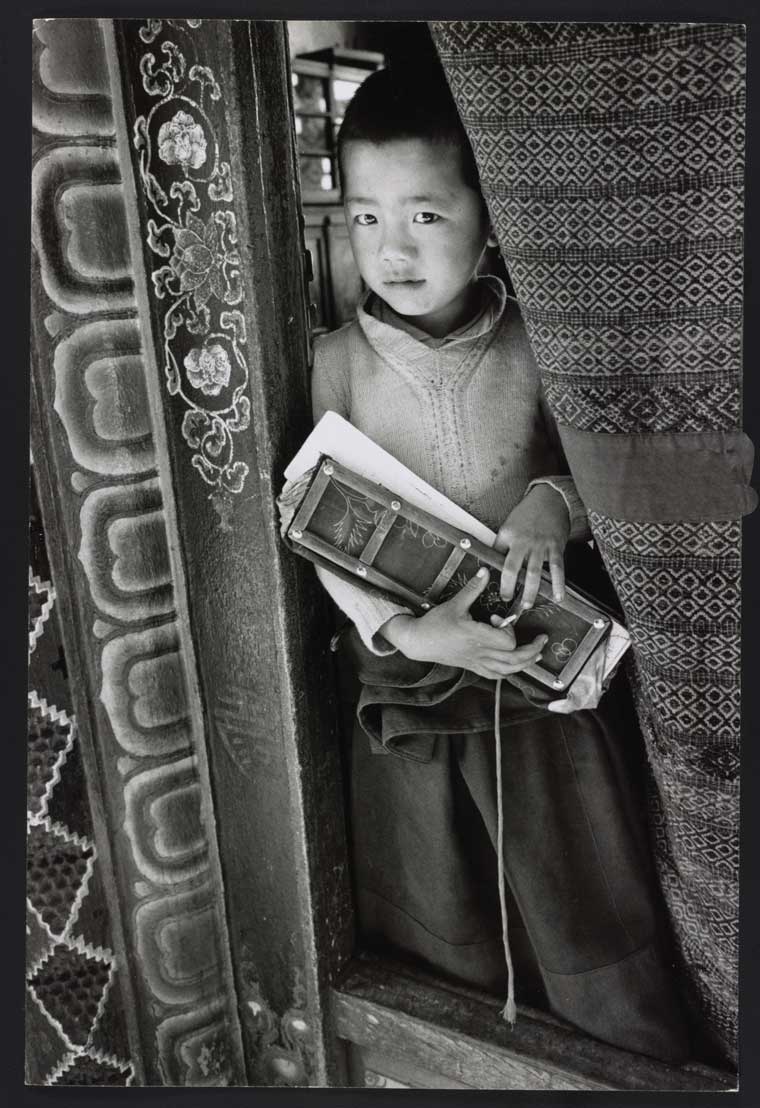
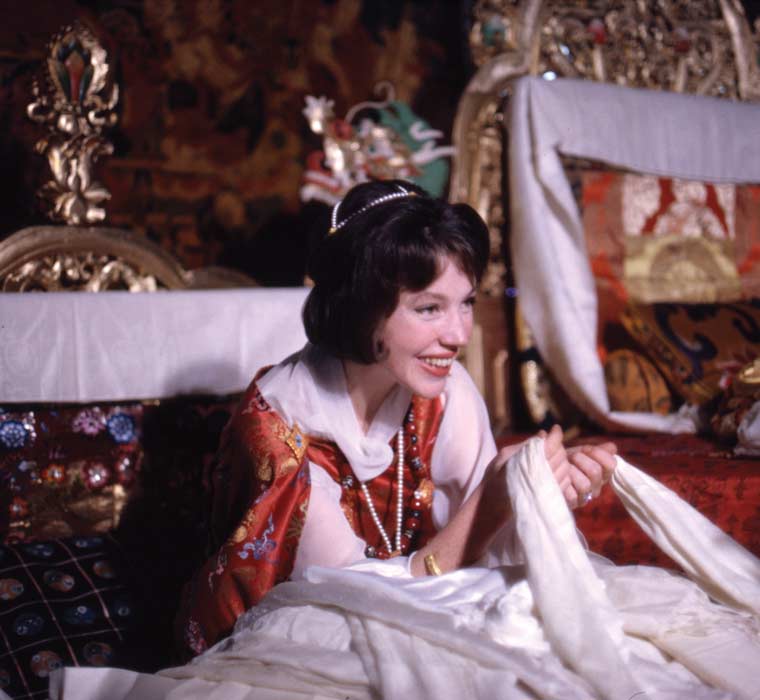
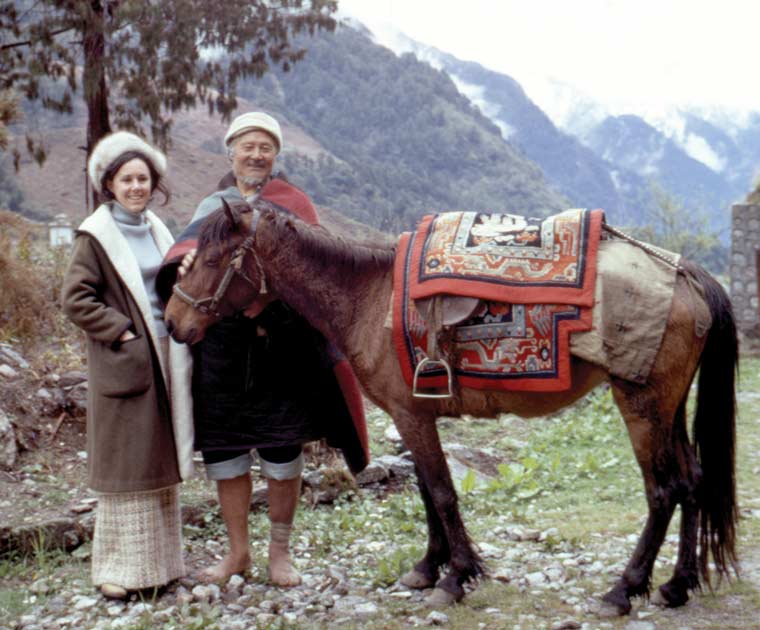
Photographic Memories (from top): A young boy in Sikkim, believed to be the reincarnation of a holy lama, holds his wood-covered prayer book. At her coronation as queen, Hope Cooke ’62 accepts gifts of traditional Buddhist scarves symbolizing purity of heart and happiness. Alice Kandell ’60 poses with Lachung village leader “Pipon,” whom she photographed several times.
